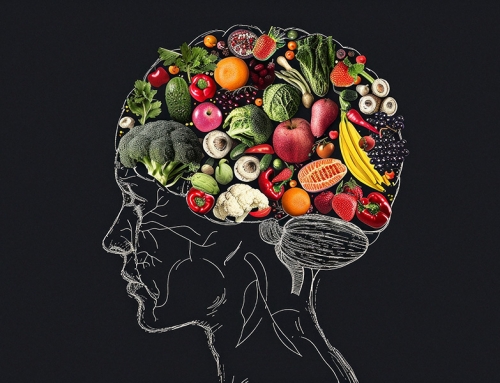Introduction
Many athletes prioritise achieving optimal performance as their primary goal. This can be accomplished by following a suitable exercise routine and ensuring adequate nutrition. By adhering to a well-designed exercise program tailored to their individual needs and aspirations, athletes can enhance their physical abilities, refine their skills, and unlock their maximum potential. Moreover, by complementing their training with a well-balanced and nutritious diet, athletes can provide their bodies with the essential fuel and building blocks necessary for peak performance. The combination of a customized exercise regimen and proper nutrition serves as the foundation for athletes to strive for excellence, consistently surpass their limits, and reach the pinnacle of athletic success [1].
When it comes to nutrients, they are generally classified into two primary classifications: micronutrients and macronutrients. These two distinct groups play crucial roles in supporting the overall health and functioning of the human body [2].
Micronutrients, the first category, encompass essential vitamins and minerals that are required in relatively smaller quantities. These vital compounds serve as cofactors in various physiological processes, aiding in the proper functioning of enzymes, hormones, and other biochemical reactions. Micronutrients include vitamins such as vitamin C, vitamin D, and vitamin E, as well as minerals like iron, calcium, and zinc. Despite being needed in smaller amounts, micronutrients are indispensable for maintaining optimal health and preventing deficiencies that can lead to various health complications [3].
On the other hand, macronutrients form the second major group of nutrients and are needed in larger quantities to provide the body with energy, support growth, and facilitate numerous metabolic functions. Macronutrients consist of carbohydrates, proteins, and fats. Carbohydrates serve as the primary source of energy, supplying fuel for the body’s activities. Proteins are essential for tissue repair, muscle growth, and the synthesis of enzymes and hormones. Fats, while often associated with negative connotations, are actually crucial for providing energy, supporting organ protection, facilitating nutrient absorption, and assisting in hormone production [3].
It is important to highlight that sports nutrition is not a universal remedy, as every athlete possesses distinct dietary requirements. Consequently, athletes, nutrition experts, and coaches must collaborate harmoniously to tailor individualized dietary strategies for each athlete, ensuring meticulous attention to their unique requirements. This meticulous approach guarantees the provision of adequate nutrient levels necessary for facilitating training adaptation and ultimately promoting peak athletic performance [1].
Nutrition Informatics in Sports Performance
Customizing Nutritional Plans for Individual Athletes: Athletes have unique nutritional requirements influenced by factors such as sport type, training regimen, body composition, and genetic predispositions. Nutrition informatics facilitates the customization of nutritional plans by collecting and analyzing individualized data, including dietary intake, energy expenditure, and nutrient deficiencies. This data-driven approach helps nutritionists and coaches develop tailored nutrition plans that provide athletes with the precise nutrients needed for optimal performance and recovery [4].
Real-Time Monitoring and Tracking of Dietary Patterns: One of the significant advantages of nutrition informatics is the ability to monitor and track athletes’ dietary patterns in real-time. Athletes can utilize mobile applications and wearable devices to record their meals, track macronutrient intake, and monitor hydration levels. This continuous monitoring allows for timely adjustments to nutrition plans, ensuring that athletes are adequately fueling their bodies to meet the demands of training and competition [5].
Data-Driven Performance Optimization Strategies: Data analytics and machine learning algorithms enable the identification of performance-related patterns and trends from large datasets. By analyzing data on nutrition, training, performance outcomes, and biomarkers, nutrition informatics can provide valuable insights into the impact of specific dietary strategies on athletic performance. This information can inform the development of evidence-based nutrition interventions and help optimize performance outcomes [6].
Supporting Recovery and Rehabilitation Through Nutrition Informatics: Nutrition plays a vital role in the recovery and rehabilitation of athletes after intense training sessions or injuries. Nutrition informatics can help develop personalized recovery plans by considering an athlete’s specific nutrient needs, timing of nutrient intake, and supplementation strategies. By monitoring biomarkers and physiological responses, nutrition informatics can guide athletes and their support teams in implementing effective nutritional interventions for optimal recovery [7].
Conclusion
The convergence of nutrition informatics and sports performance presents captivating opportunities to optimize athlete nourishment, amplify performance, and foster comprehensive well-being. Through the utilization of advanced technology, sophisticated data analytics, and individualized methodologies, nutrition informatics empowers the customization of precise dietary strategies, real-time surveillance, and decision-making rooted in empirical evidence. Nonetheless, surmounting obstacles like data security, standardization, and interdisciplinary cooperation is imperative to fully exploit the transformative potential of nutrition informatics in the realm of sports performance.
The effective deployment of nutrition informatics necessitates synergistic collaboration among esteemed nutritionists, accomplished data scientists, proficient coaches, elite athletes, and other relevant stakeholders. Future research endeavours should diligently focus on refining data collection methodologies, establishing standardized protocols, and delving into the seamless integration of emergent technologies such as artificial intelligence and machine learning. By relentlessly advancing the field of nutrition informatics and astutely navigating the associated challenges, the sports community can wholeheartedly embrace evidence-driven, tailored nutritional strategies that intricately optimize athletic performance and comprehensively promote well-being.
References
-
- Ghazzawi, H. A., Hussain, M. A., Raziq, K. M., Alsendi, K. K., Alaamer, R. O., Jaradat, M., Alobaidi, S., Al Aqili, R., Trabelsi, K., & Jahrami, H. (2023). Exploring the Relationship between Micronutrients and Athletic Performance: A Comprehensive Scientific Systematic Review of the Literature in Sports Medicine. Sports, 11(6), 109. //doi.org/10.3390/sports11060109
- Brancaccio, M., Mennitti, C., Cesaro, A., Fimiani, F., Vano, M., Gargiulo, B., Caiazza, M., Amodio, F., Coto, I., Mazzaccara, C., Lombardo, B., Pero, R., Terracciano, D., Limongelli, G., Calabrò, P., Frisso, G., & Scudiero, O. (2022). The Biological Role of Vitamins in Athletes’ Muscle, Heart and Microbiota. International Journal of Environmental Research and Public Health, 19(3), 1249. //doi.org/10.3390/ijerph19031249
- Purcell, L. K., & Section, E. M. (2013). Sport nutrition for young athletes. Paediatrics & Child Health, 18(4), 200-202. //doi.org/10.1093/pch/18.4.200
- Thomas, D. & Burke, Louise & Erdman, Kelly. (2016). Nutrition and Athletic Performance. medicine and science. 48. 543-568. 10.1249/MSS.0000000000000852.
- Zhou, Jianwei. (2022). Design of Residents’ Sports Nutrition Data Monitoring System Based on Genetic Algorithm. Computational Intelligence and Neuroscience. 2022. 1-10. 10.1155/2022/9002713.
- Mahtoliya, K. (2023, April 27). The Importance of Sports Analytics & Data Driven Decision Making | Data-Driven Dominance. Retrieved from Voice of Indian Sports – KreedOn website: //www.kreedon.com/the-importance-of-sports-analytics/
- Papadopoulou, S. K. (2020). Rehabilitation Nutrition for Injury Recovery of Athletes: The Role of Macronutrient Intake. Nutrients, 12(8), 2449. //doi.org/10.3390/nu12082449






Leave A Comment